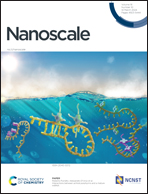Superalkali halide perovskites with suitable direct band gaps for photovoltaic applications†
Abstract
The construction of superalkali halide perovskites has attracted attention for the development of new photovoltaic materials, but stable superalkalis have not been found until now. Herein, to construct new three-dimensional superalkali halide perovskites with a MI3 frame (M = Sn and Pb), a new Li(H2O)3+ superalkali cation is designed and selected based on low vertical ionization potential, suitable tolerance factor, small ionic radius and large dissociation energy. High-throughput first-principles calculations show that superalkalis with lower vertical ionization potentials exhibit stronger interactions with the MI3 frame. The normal and cubic Li(H2O)3MI3 perovskites and cubic Li(H2O)4PbI3 perovskites have direct band gaps, s–p and p–p electron transitions, effective carrier masses of less than 0.45me and exciton binding energies of less than 291 meV. Moreover, the cubic Li(H2O)3PbI3 perovskite with a direct band gap of 1.40 eV can in theory show a power conversion efficiency of 33.49%. These results strongly suggest that superalkali cations with large dissociation energy can be used to develop stable superalkali perovskites for photovoltaic applications.



 Please wait while we load your content...
Please wait while we load your content...